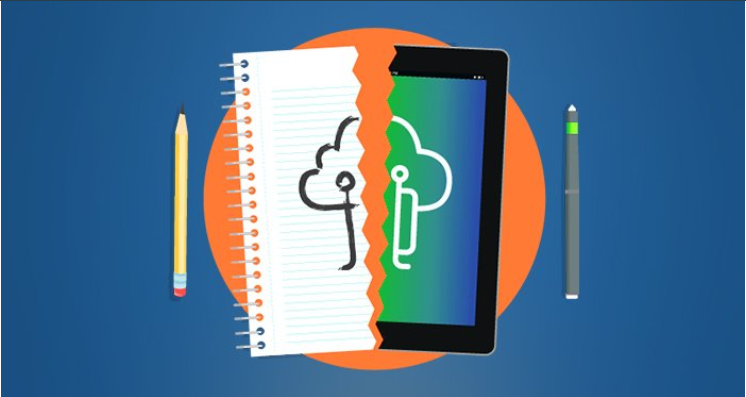Bridging the Homework Gap in a Crisis
Virtual learning may seem like the best option in a time when social distancing is key, but for some students, learning online is not an option.
The homework gap impacts millions of students nationwide, and this impact is intensified by the transition to virtual learning.
As a pandemic rampages across the country, schools are attempting to find new ways to teach the curriculum rather than in a traditional classroom setting. A common way they are doing this is by turning to virtual learning. Students are now learning online from their homes, but the public often overlooks the students who may not have access to technology or the internet. These students are now facing a crisis involving their education and future because they do not have access to the resources they need. This crisis is known as the homework gap.
The homework gap includes the 17% of United States students who do not have computers at home and the 18% of students who do not have access to broadband internet in their homes. In a world shifting to virtual learning, this gap is more vital than ever. The homework gap causes certain students to gamble for their education, praying that their internet works well enough for them to attend class or do their schoolwork. At North Allegheny, a majority of students are fortunate enough to have internet connection and technology on which they can communicate with their teachers and continue the learning process which was stopped abruptly by the pandemic. Unfortunately, this privilege does not exist everywhere.
Many people underestimate the dilemma of the homework gap. Education is constantly evolving, and it is now entering the realm of the internet. Therefore, teachers are regularly assigning online work, even in a traditional classroom setting. In situations such as these, students without home access to the internet find themselves studying in places with free internet or completing assignments using their phones. For some this seems bizarre, for others, it is a reality that they may have to complete entire essays and research projects on their phone.
Since all students are now confined to their homes, those lacking proper internet connection are attempting to finish their education without the necessary resources. Even if students are given technology which they can use to learn at home, it is not useful if they do not have efficient internet connection. In 2015, 1.1 million Pennsylvanian homes lacked internet connection, and around the country, one-third of households earning less than $30,000 a year do not have a high-speed internet connection. The income that families earn is dictating how much students can earn from public education. Schools may provide Chromebooks or tablets to allow students to learn in their own homes, yet a significant number of children are not benefited at all.
Whether during a pandemic or the normal school year, the absence of the internet in a student’s home can have a great impact on their education. According to the National Center for Education Statistics, “At both grade 4 and grade 8, average 2015 reading scale scores were higher for students who reported that they had access to the Internet at home than for those who did not. The average reading score was 267 for 8th-grade students who had access to the Internet at home, compared to 242 for those who did not have access.” The internet is something that is regularly taken advantage of in well-off communities. Although students may have the means to interact with the internet at school, extended time away from the classroom puts students without internet connection at a disadvantage. Students without access to virtual learning are now missing out on 2 to 3 months of school, and come next year, they will be behind their peers regarding their curriculum.
Not only does virtual learning impact a student’s ability to understand what is being taught, but it can also impact attendance. During remote learning, students rarely or never come to face-to-face contact with their teachers. This prevents the one on one connection a teacher can make with their student, and this relationship can affect how much effort a student puts into their schoolwork. In low-income communities, studies report that around less than half of students are regularly participating in online class work as schools transfer to virtual learning. There are already problems of absences in low-income communities, and the transition to virtual learning simply worsens the problem. This is mostly due to the spotty internet, for many schools provide technology to their students. Despite this, students who have a passion to learn and strive to get good grades are now struggling to keep in touch with teachers and complete assignments. The deprivation of a proper learning environment deepens the line between the middle and lower class. This influences both the lives of low-income students now and the opportunities they may have in the future.
To replace online learning in communities with poor internet, some schools have turned to the use of learning packets where teachers accumulate a packet of schoolwork needed to complete the textbook for the remainder of the academic year. There exist a number of problems with this, one being the failure of accountability. The issuing of learning packets prevents students from being held accountable for their work because they have no way to prove that they are completing the necessary assignments. There is also an inability to deliver direct instruction. With packets, teachers can not directly communicate with their students to guide them through their learning. A two hundred page packet can not replace seven hours of face to face learning.
Even before the era of COVID-19, students missing technology in their homes was always a problem in the education system. In 2018, one in five students claimed to struggle with completing homework because of internet access. While their peers have access to the world’s information with the press of a button from the comfort of their home, other students hassle to learn the information they need or to communicate with their teachers. Only at this time, when the constant hustle of the world has silenced, are people recognizing where problems truly lie.
It is common knowledge that technology is the future. One could even say that the current virtual learning environment is setting students up for the future. If this is true, then virtual learning is setting some students up for failure. The homework gap is pushing students in low-income families on a path where they are not prepared for what’s to come. Students with a passion to learn, students who once eagerly participated in a traditional classroom setting are now having to overcome a battle with something they have no control over. Instead of acknowledging the problem, people are disregarding it, claiming they have bigger fish to fry. They are ignoring the very future of this nation in their hands.

Maya Sivakumar is a sophomore at NAI. It is her second year on the NAEye staff. She is very excited to be a co-editor in chief and contribute more ideas...



